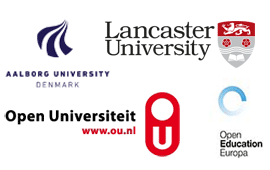

Qualitative differences in students’ perceptions of others in a networked learning environment
Maria Cutajar, Department of Computing and IT (Junior College), University of Malta
In networked learning practice the emphasis on human relations for learning beyond engagement with learning materials using information and communication technologies is a significant shift from the prevalent classroom-based lecture which students are used to. In networked learning teachers are assumed to take a less prominent position permitting students to experience learning through active participation in cooperative and collaborative activities with others. This paper proposes a constitutive description for considering human players for learning in the formal networked learning environment hence departing from previous depictions of contrasting views reported in the research literature. Different ways teachers and students are perceived to contribute to networked learning experiencing are understood in distinction and in relation to each other. This portrayal is the research outcome of a phenomenographic investigation which led to a configuration comprised of three qualitatively different ways how students account for the teacher and other students contributing to their learning in a formal networked learning environment. The hierarchically inclusive categories describing this variation have the student perceiving other students as separately persevering with their own studies and the teacher as director of all learning; to the perception of other students as direct contributors through their visible activity and interactivity and the teacher as organiser and guide for students’ learning; to the perception of other students as co-creators for learning and the teacher as convenor coming close to being co-actor. The structural threads drawing these categories together into a single coherent whole are the academic role or active responsibility for learning teachers and other students are perceived to assume which across the structuring continuum are in a relationship of pairwise alignment.
These findings project different perceptions as all legitimate and suggest that in deepening awareness teachers and learners gravitate towards becoming teachers and learners for each other. Moreover in this writing is emphasised the constitutive and open nature of phenomenographic description projecting fluidity for thinking about students' perceptions of human others as contributors to NL experiencing. All this emphasises that networked learning provision needs to incorporate a directed effort to accommodate diversity in how students perceive and hence relate to human others for learning when in the formal networked learning setting, building in support to encourage students embracing different perceptions to experiment different learning and teaching roles as networked learning participants.
Keywords
Networked learning, phenomenography, students' perceptions, roles, online learning
Joint Organising Institutions
| Conference Travel and Accommodation |Doctoral Consortium | Past Conference Proceedings | Contact |